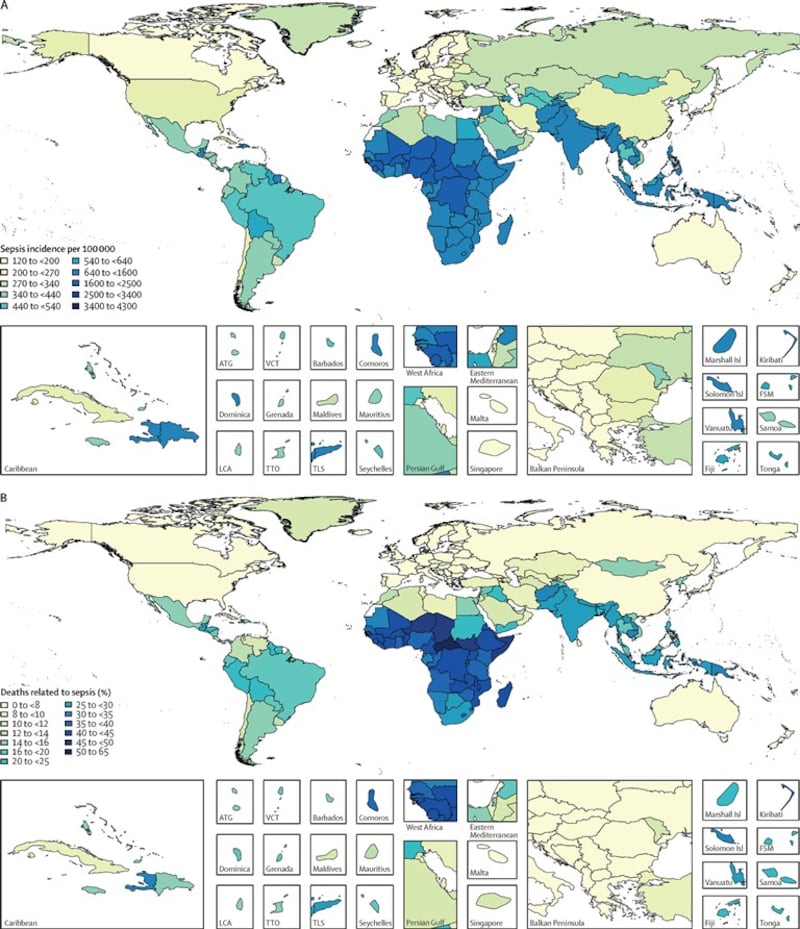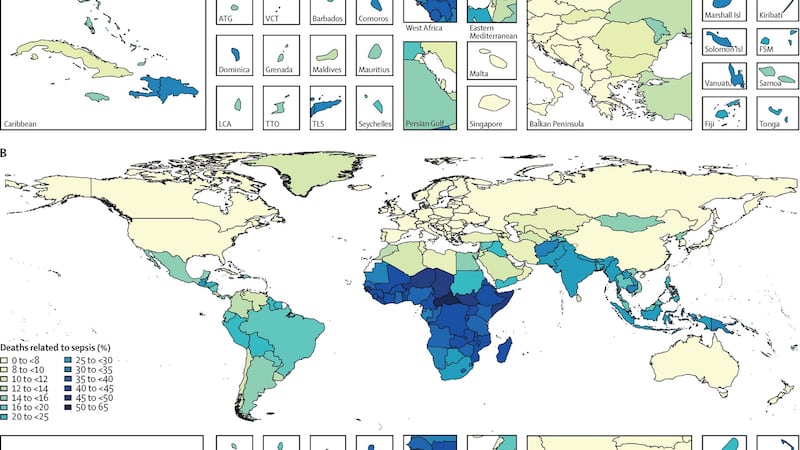Sepsis is now a bigger killer than cancer, with more than double the number of deaths worldwide than previously estimated, a global study suggests.
One person every three seconds dies from the condition worldwide, a charity said in response to the research, which suggests sepsis accounts for almost a fifth of global deaths.
The researchers’ Global Burden Of Disease Report (GBDR) on sepsis estimates there were 48.9 million cases in 2017, and 11 million deaths, across 195 countries and territories. A World Health Organisation report found an estimated 9.6 million people died from cancer in 2018.
This equates to just under a fifth (19.7 per cent) of all global deaths that year.
The most recent global estimate, in 2016, was of 19.4 million cases and 5.3 million deaths, based on data on adults in hospitals in seven high-income countries.
These were the US, Australia, New Zealand, Spain, Germany, Norway and Sweden.
But while the authors said they were “alarmed” to see the death rates so high, their research shows cases of sepsis and deaths have been falling overall over the last 30 years.
The researchers estimated there were 60.2 million cases of sepsis in 1990, almost a fifth (18.8 per cent) higher than their 2017 estimate.
In the new study, published in The Lancet, half of all cases occurred in children and adolescents, particularly in low or low-middle income countries.

Some 15 per cent of the cases occurred in high-income countries such as the UK, which was not included in the 10 countries with the lowest death and incident rates.
Experts warn the number of deaths could rise if new ways to tackle antibiotic resistance are not found quickly.
The authors write: “We have produced global sepsis estimates that are more than double previous calculations, with 11 million sepsis deaths and 48.9 million incident sepsis cases in 2017.

“We have shown a global trend of decreasing sepsis burden but, importantly, substantial differences between regions remain, in total number of sepsis deaths, age distribution of sepsis deaths, and case fatality.
“These differences by location are alarming and deserve urgent attention from the global health, research, and policy communities.”
Sepsis, which is hard to spot, occurs when the body responds poorly to a bacterial infection and attacks its own tissue and organs.
Symptoms include a high or abnormally low temperature, fast heart rate and rapid breathing.
Deterioration can be rapid, and if it is not detected early, can lead to multi-organ system failure and death.
The study, led by researchers at the University of Pittsburgh and University of Washington schools of medicine, looked at hospital records and data obtained from the Global Burden of Diseases.
The 10 countries with the highest death rates were all in Africa, with the Central African Republic leading the survey.
Those with the lowest death rates were mainly Middle Eastern and wealthier countries.–PA














